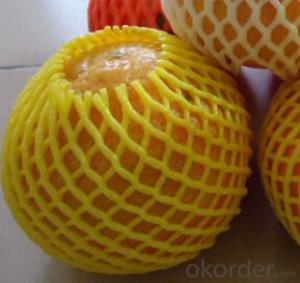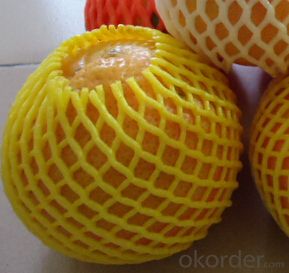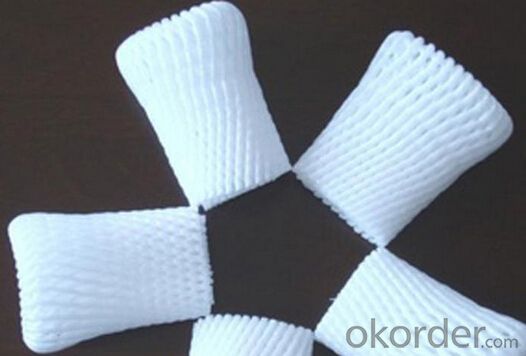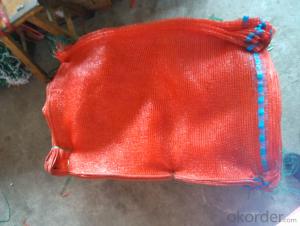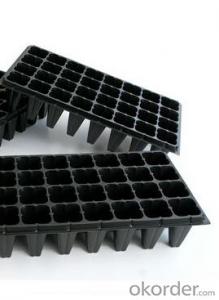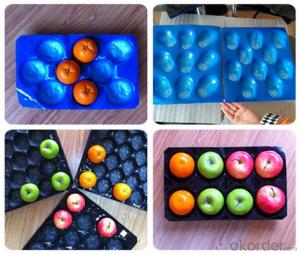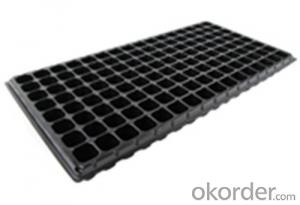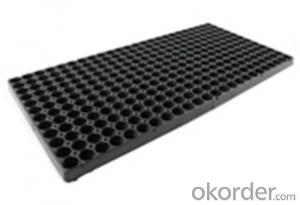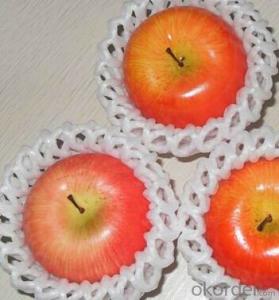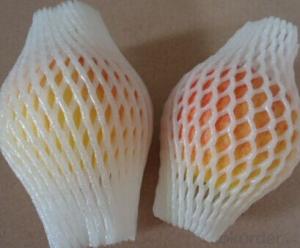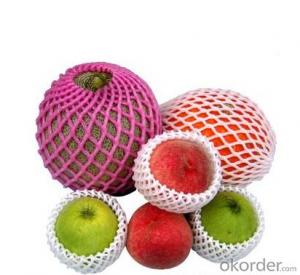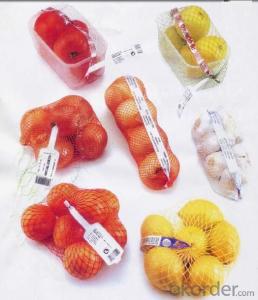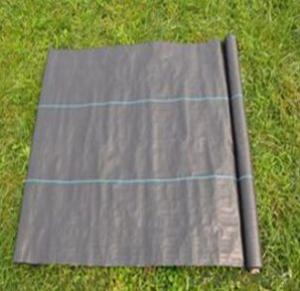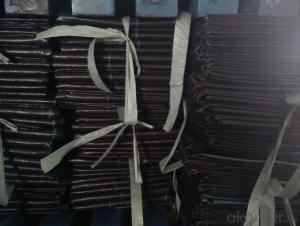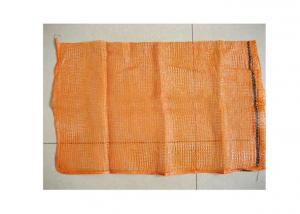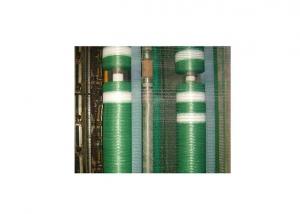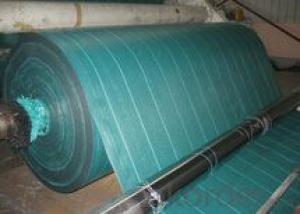Expanging Foam Packing Net for Fruit/Bottle
- Loading Port:
- Qingdao
- Payment Terms:
- TT OR LC
- Min Order Qty:
- 100000 pc
- Supply Capability:
- 100000000 pc/month
OKorder Service Pledge
OKorder Financial Service
You Might Also Like
Introduction of Expanging Foam Packing Net for fruit/bottle
We can make any size as requested,including the diameter,lenth,thread diameter and quantity .also does the colors ,the lovely colors can help improve the products marketable.
Features of Expanging Foam Packing Net for fruit/bottle
1. It is mainly used as the package of the fruits in growing season and in supermarket.They can protect the surface of the fruits avoiding any damages in transit and during period of display in sales field.
2.To provide best protection for the fragile cargoes such as Glassware ,Ceramics and Electronic components,etc. the comprehensive protection can put cargoes in safer situation in transit , decrease the damage rate to the minimum.
Specifications of Expanging Foam Packing Net for fruit/bottle
1.EPE FOAM NET:Size and weight:as your require
2. EPE FOAM NET Color:white, pink, red, green yellow (can be according to your requirement)
3. EPE FOAM NET Material: abirulent insipidity EPE
4. EPE FOAM NET MOQ:1*20GP
5. EPE FOAM NET Packaging: If you have any packaging design, we are capable of supplying precise molding at the soonest.
Pictures of Expanging Foam Packing Net for fruit/bottle


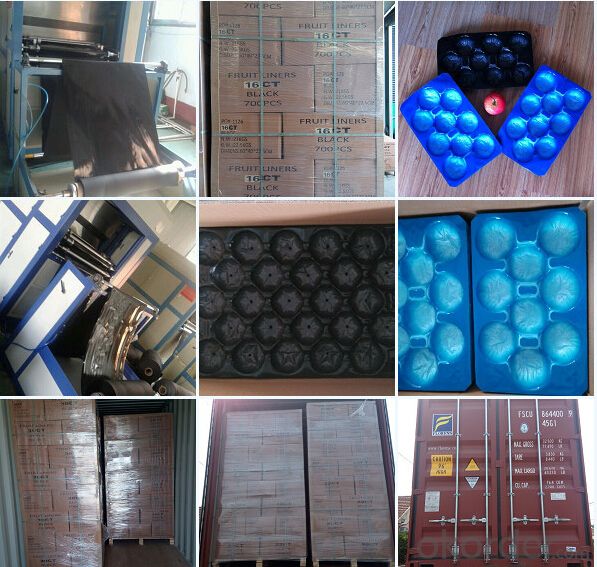
FAQ:
Q1 How fast can i get the quotation?
A We usually quote within 24 hours after we get your inquiry. If you are very urgent to get the price, please call us or tell us in your email so that we will regard your inquiry priority.
Q2 How can i get a sample to check your quality?
A After price confirmation, you can require for samples to check our quality.
Q3 What kind of files do you accept for?
A PDF, Word, Excel
Q4 Can you design for us?
A Yes. We have a professional team having rich experience in plastic tray design and manufacturing. Just tell us your ideas and we will help to carry out your ideas into perfect plastic tray. It does not matter if you do not have someone to complete files. Send us high resolution images, your Logo and text and tell us how you would like to arrange them. We will send you finished files for confirmation.
- Q: How do you prevent disease spread in nursery trays?
- To prevent disease spread in nursery trays, several measures can be taken. Firstly, it is important to maintain strict hygiene practices, such as regularly cleaning and sanitizing the trays, tools, and equipment used. Secondly, implementing proper ventilation and ensuring adequate spacing between trays can help minimize the buildup of moisture and reduce the risk of disease transmission. Additionally, practicing crop rotation and avoiding overcrowding can help prevent the spread of diseases from one tray to another. Regular inspection and early identification of any signs of disease or pest infestations are crucial, as prompt action can prevent further spread. Finally, using disease-resistant varieties, sterilized soil or growing medium, and practicing good irrigation practices can also contribute to preventing disease spread in nursery trays.
- Q: Can ground cover plants be used to cover bare patches in a fruit orchard?
- Yes, ground cover plants can be used to cover bare patches in a fruit orchard. Ground cover plants serve multiple purposes such as preventing soil erosion, suppressing weed growth, conserving soil moisture, and providing habitat for beneficial insects. They can also enhance the aesthetics of the orchard and promote a healthier ecosystem. However, it is important to choose the right ground cover plants that are compatible with the specific fruit trees and their needs, considering factors such as sunlight, soil type, and water requirements.
- Q: What are some ground cover options for a rooftop courtyard?
- Some ground cover options for a rooftop courtyard include sedum, moss, creeping thyme, creeping Jenny, and succulents. These plants are low-growing, drought-tolerant, and can thrive in shallow soil or containers. They provide greenery, help to reduce heat, and require minimal maintenance.
- Q: What are some ground cover options for a Japanese garden?
- Some ground cover options for a Japanese garden include moss, ferns, mondo grass, creeping thyme, and ajuga. These choices help create a lush and serene atmosphere while maintaining the traditional aesthetic of a Japanese garden.
- Q: How do you choose a ground cover that is heat-tolerant?
- When choosing a heat-tolerant ground cover, consider factors such as the plant's ability to withstand high temperatures, its water requirements, and its ability to thrive in your specific climate. Look for ground covers that are native or well-adapted to your region, as they are more likely to tolerate heat. It's also helpful to read plant labels or consult with local garden centers to identify heat-resistant varieties.
- Q: Are nursery trays suitable for starting shrub seedlings?
- Yes, nursery trays are suitable for starting shrub seedlings. Nursery trays provide a controlled and protected environment for seedlings to germinate and establish their root systems. They allow for easy monitoring of moisture levels, temperature, and nutrient availability, ensuring optimal conditions for healthy growth. Additionally, the individual compartments in nursery trays help prevent root entanglement and allow for efficient transplantation when the seedlings are ready to be moved to larger pots or the ground.
- Q: What are some ground cover options for areas with heavy pollution?
- Some ground cover options for areas with heavy pollution include English ivy, creeping thyme, creeping juniper, and periwinkle. These plants are known for their ability to tolerate pollution and can help improve air quality in such areas.
- Q: will a hot glue gun hold plastic together?
- It depends on the type of plastic. Try superglue ( cyanoacrylate)- if that doesn't work try modeling cement. If that fails, try epoxy. I would not recommend hot glue, since it will likely distort the plastic.
- Q: This question asks about the criteria and methods farmers use to select a trustworthy supplier for high-quality agricultural plastic products.
- <p>Farmers choose a reliable supplier of high-quality agricultural plastic products by considering several factors. They look for suppliers with a strong reputation and positive customer reviews. They also check for certifications that ensure the quality of the products, such as ISO standards. Farmers often request product samples to test the durability and effectiveness of the plastics. They may also consider the supplier's history of innovation and their commitment to environmental sustainability. Additionally, the cost-effectiveness, delivery times, and after-sales service are crucial factors in their decision-making process. Building long-term relationships with suppliers who can provide consistent quality and support is also a priority for farmers.</p>
- Q: If you can, tell how each plastic looks like.
- Thermo Plastics (soften when heated): Polyethylene, Polyvinyl chloride, Polypropylene, Polystyrene, Polyethylene terephalate, Acrylonitrile butadiene styrene, Polymethyl methacrylate, Polyamide. Thermosetting Plastics (release heat as they harden): Polyurethane, Phenolic, Melamine-formaldehyde, Urea-formaldehyde, Polyester, Epoxy. There are the names of 14 plastics I could remember. I have no idea how to figure out which are the six most popular. Perhaps you should do a search on each one, with an additional parameter to narrow the search. For example, Polyethylene+ global-annual-production Don't use the quotation marks; no space before but one space after the plus; no spaces before or after the hyphen. Once you know the global annual production of each type, you could rank them in order and find the most popular types. Why do teachers ask such idiotic questions? They sound so easy, but finding the true facts is always nearly impossible. Why couldn't they just say, Name six common plastics. Oh well, it's your problem, not mine. Oops! Forgot the last part of the question. It is generally impossible to describe the appearance of a particular type of plastic. Their names refer to the chemical structure of their molecules and their appearance depends largely on techniques used during manufacture. Another idiotic teacher question, hopelessly vague and nearly impossible to answer. Again, it's your problem. Bye....................
Send your message to us
Expanging Foam Packing Net for Fruit/Bottle
- Loading Port:
- Qingdao
- Payment Terms:
- TT OR LC
- Min Order Qty:
- 100000 pc
- Supply Capability:
- 100000000 pc/month
OKorder Service Pledge
OKorder Financial Service
Similar products
Hot products
Hot Searches
Related keywords
